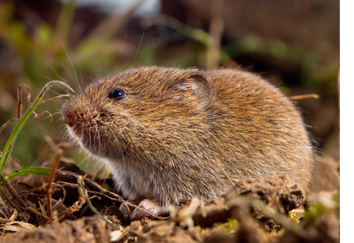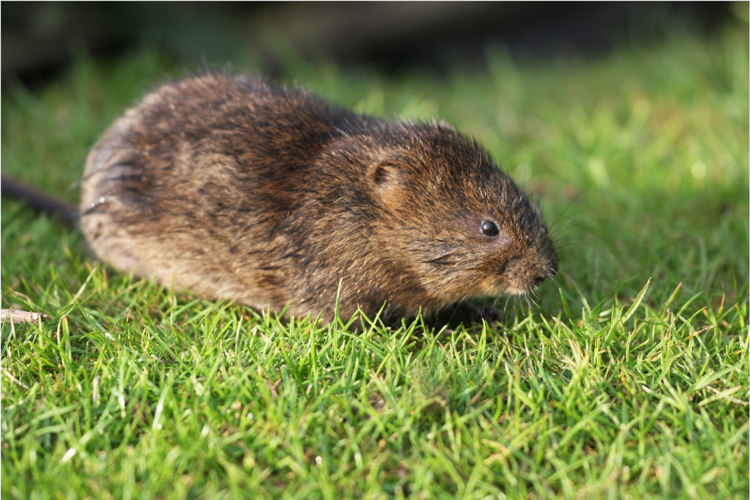Efficient Vole Control Solutions: Taking Care Of Vole Pest Issues
Efficient Vole Control Solutions: Taking Care Of Vole Pest Issues
Blog Article
Grasping Vole Insect Control: Thorough Insights on Infestation Avoidance and Therapy Methods
As residential or commercial property proprietors and caretakers, the existence of voles can pose a significant difficulty to maintaining the integrity of our outdoor areas. Understanding the details of vole actions is critical in creating efficient parasite control approaches. By recognizing the refined indicators of vole problem early on, we can take positive actions to stop widespread damage. In this conversation, we will certainly explore the nuances of vole habits, look into the recognition of invasion indications, and discover one of the most efficient prevention and therapy approaches. Keep tuned to discover the understandings that will certainly empower you to master vole insect control and safeguard your residential or commercial property against these evasive rodents.
Understanding Vole Habits
Analyzing the foraging patterns of voles offers valuable insights into their habits and environment preferences. Voles, tiny rodents looking like mice, are herbivores understood for their below ground tunneling tasks. By observing their foraging habits, researchers can acquire a far better understanding of where voles favor to establish their environments and the level of their ecological influence. Voles are prolific breeders, with a single women efficient in producing numerous litters in a year, making it crucial to comprehend their behavior for reliable insect control approaches.
Research suggests that voles show careful feeding behaviors, favoring roots, seeds, and tubers. This dietary preference influences their foraging patterns, leading them to areas rich in greenery and ground cover. Furthermore, voles are known to produce fancy tunnel systems for foraging and nesting functions, suggesting a high level of adaptability to their surroundings.
Understanding vole actions is essential for executing targeted pest control steps that interrupt their habitat preferences and foraging tasks (vole lawn damage). By examining their habits, professionals can establish much more reliable avoidance and therapy strategies to handle vole invasions

Identifying Indications of Vole Problem
Vole infestations can be discovered by identifying specific indicators of their visibility in an area. One of one of the most usual indications of a vole infestation is the visibility of surface area runways. Voles develop networks of slim paths on the ground that are usually about 2 inches large. These paths are typically located in verdant locations or under compost or ground cover where voles can move openly and look for food.
Another vital indication of vole problem is the existence of little burrow openings in the ground. In addition, voles are known to leave behind chewed plant stems, origins, and bulbs near their burrow openings, showing their feeding task in the area.
In addition, vole droppings can also represent their visibility. Vole droppings are small, brownish, and cylindrical in form, looking like grains of rice. Discovering these droppings along paths or near burrow openings can validate a vole infestation. By being alert for these indicators, homeowner can quickly attend to vole invasions and prevent additional damage.
Executing Aggressive Prevention Steps

Additionally, employing natural vole deterrents like castor oil-based repellents or killer urine can serve as reliable safety nets. It is likewise recommended to regularly examine outdoor spaces for any indications of vole activity, such as runways or delve openings, to address potential problems immediately. vole yard damage. By taking on these proactive prevention methods, building owners can dramatically decrease the probability of vole damage and published here maintain the wellness and aesthetics of their landscapes
Efficient Treatment Techniques
Incorporating targeted trapping approaches and making use of approved rodenticides are essential components of reliable therapy methods for taking care of vole problems. Trapping can be an efficient method to minimize vole populations, especially when placed tactically in their energetic runways. Snap catches and live catches can both work, with the latter enabling the capture and moving of voles. When using rodenticides, it is essential to comply with safety and security standards to avoid damage to non-target pets and family pets. Location rodenticides in safe and secure lure terminals to minimize threats to unplanned targets. In addition, environment adjustment, such as minimizing ground cover and eliminating resources of food, can help deter voles from infesting a location. Normal monitoring and maintenance are also key aspects of successful therapy strategies to guarantee that vole populaces are kept under control. By incorporating capturing, rodenticides, habitat alteration, and constant monitoring, reliable vole insect control can be achieved.
Tracking and Upkeep Tips
Maintaining an organized routine for surveillance and performing routine maintenance tasks is crucial to sustain the effectiveness of vole insect control steps. Routine surveillance enables the very early detection of vole task, making it possible for prompt intervention prior to problems aggravate. To efficiently keep track of vole populations, strategically placed traps can be used in vole paths or near burrow entryways. By regularly checking these catches, imp source building owners can gauge the degree of vole activity and adjust control approaches accordingly.
Additionally, preserving a tidy and clean landscape is important in vole prevention. Cleaning away debris, such as stacks of wood or thick plants, gets rid of possible vole environments. Regularly cutting and mowing lawns vegetation helps in reducing vole concealing areas and reduces their access to food sources.
In addition, continuous maintenance of physical obstacles, such as fences or cable mesh, is vital to avoid vole invasion. Inspecting and fixing any kind of problems to these structures ensures that vole control continues to be efficient in protecting residential or commercial properties from problems. By integrating these monitoring and maintenance methods right into a detailed vole insect control strategy, individuals can successfully handle vole populaces and secure their homes from damage.
Final Thought
Finally, mastering vole pest control needs a solid understanding of vole actions, the ability to determine indications of invasion, executing aggressive avoidance measures, efficient therapy methods, and regular monitoring her latest blog and upkeep. By taking a thorough approach to vole control, people can efficiently manage and protect against problems, inevitably protecting their property and bordering setting from damage brought on by these little rodents.
In this discussion, we will explore the subtleties of vole habits, dig into the recognition of infestation signs, and uncover the most efficient prevention and therapy techniques.Integrating targeted trapping approaches and utilizing authorized rodenticides are necessary components of efficient therapy techniques for managing vole invasions. To properly check vole populaces, purposefully positioned traps can be made use of in vole runways or near burrow entrances. Inspecting and fixing any type of damages to these structures ensures that vole control continues to be effective in safeguarding homes from problems. By including these tracking and maintenance methods into a comprehensive vole pest control plan, individuals can properly manage vole populaces and shield their residential properties from damage.
Report this page